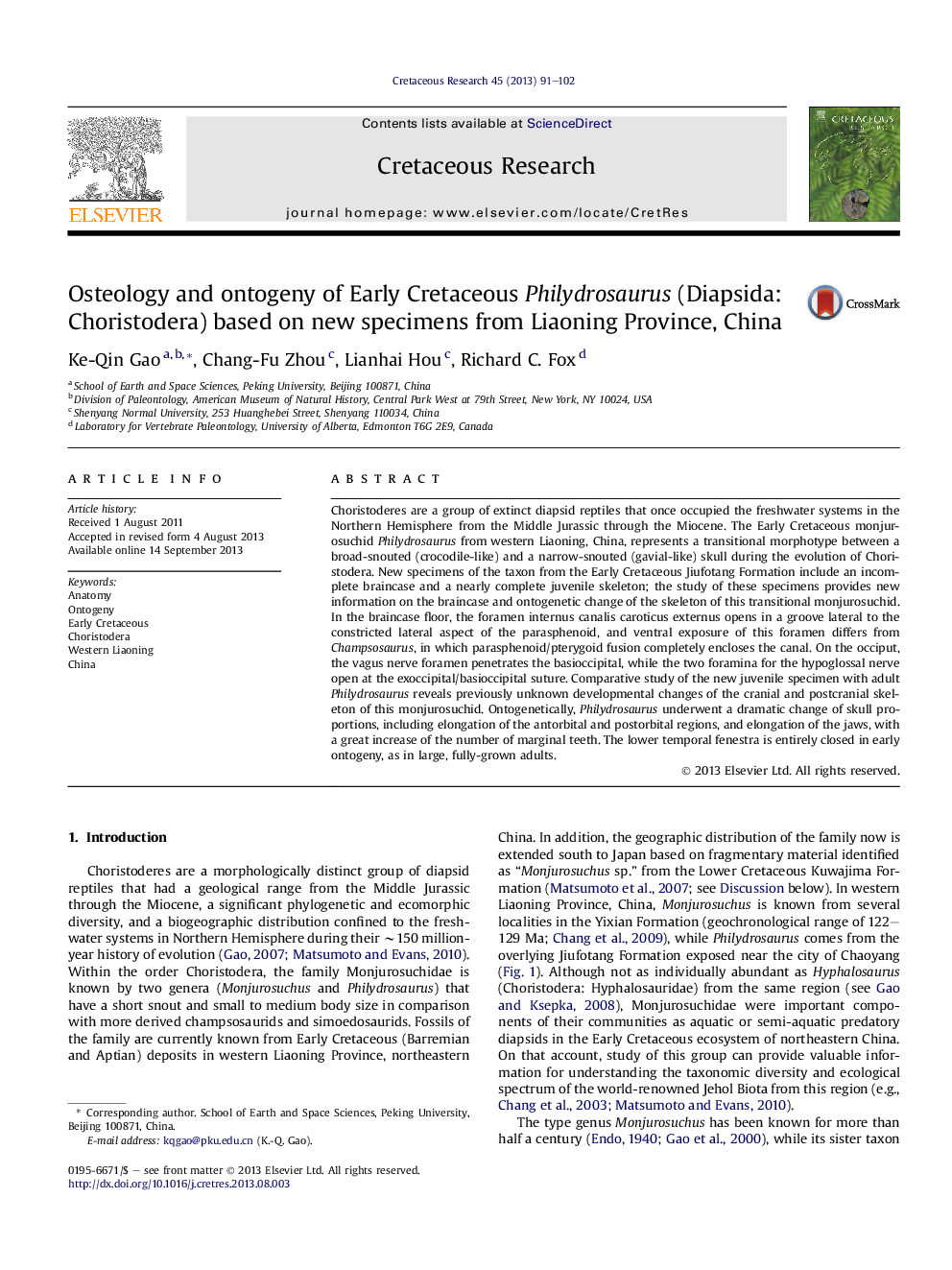| Article ID | Journal | Published Year | Pages | File Type |
|---|---|---|---|---|
| 4747286 | Cretaceous Research | 2013 | 12 Pages |
•We present detailed anatomic description of Philydrosaurus as a key component of the Jehol Biota.•We examine and discuss ontogenetic changes of the taxon.•New information increases knowledge on braincase of the fossil taxon.•Philydrosaurus underwent a dramatic change of skull proportions ontogenetically.•Supratemporal trough and closed infratemporal fenestra are known in both juvenile and adults.
Choristoderes are a group of extinct diapsid reptiles that once occupied the freshwater systems in the Northern Hemisphere from the Middle Jurassic through the Miocene. The Early Cretaceous monjurosuchid Philydrosaurus from western Liaoning, China, represents a transitional morphotype between a broad-snouted (crocodile-like) and a narrow-snouted (gavial-like) skull during the evolution of Choristodera. New specimens of the taxon from the Early Cretaceous Jiufotang Formation include an incomplete braincase and a nearly complete juvenile skeleton; the study of these specimens provides new information on the braincase and ontogenetic change of the skeleton of this transitional monjurosuchid. In the braincase floor, the foramen internus canalis caroticus externus opens in a groove lateral to the constricted lateral aspect of the parasphenoid, and ventral exposure of this foramen differs from Champsosaurus, in which parasphenoid/pterygoid fusion completely encloses the canal. On the occiput, the vagus nerve foramen penetrates the basioccipital, while the two foramina for the hypoglossal nerve open at the exoccipital/basioccipital suture. Comparative study of the new juvenile specimen with adult Philydrosaurus reveals previously unknown developmental changes of the cranial and postcranial skeleton of this monjurosuchid. Ontogenetically, Philydrosaurus underwent a dramatic change of skull proportions, including elongation of the antorbital and postorbital regions, and elongation of the jaws, with a great increase of the number of marginal teeth. The lower temporal fenestra is entirely closed in early ontogeny, as in large, fully-grown adults.
